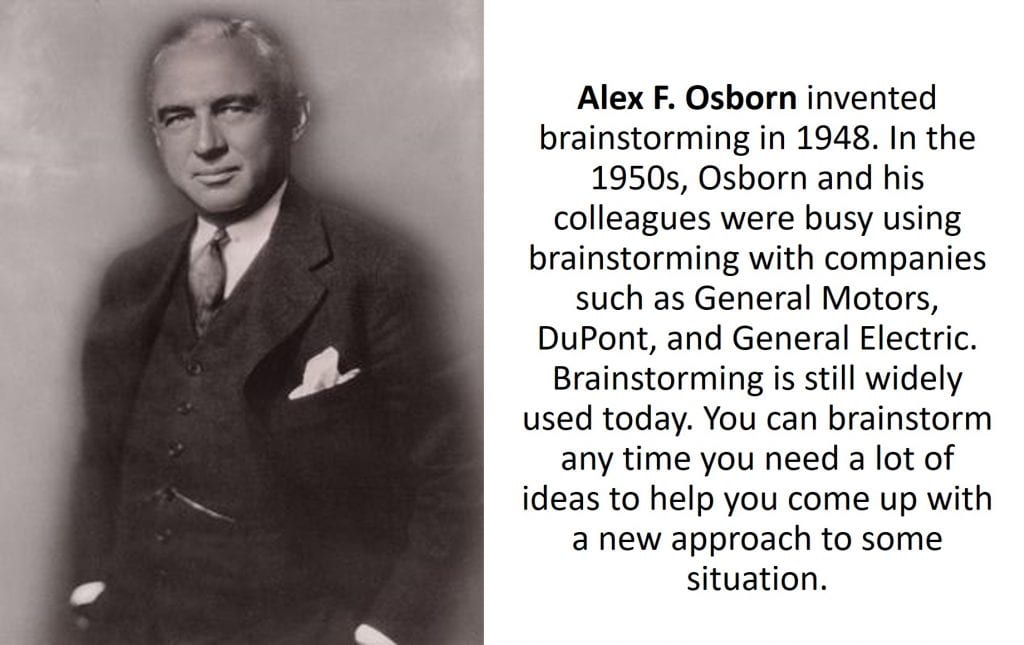Brainstorming, one of the oldest and most widely used divergent thinking skills, is an openminded process to come up with as many ideas as possible on a topic as quickly as possible. Many people enjoy brainstorming and often do it just for fun.
 Brainstorming’s inventor, Alex Osborn, is one of the great names in the field of creativity and creative thinking. He and J. Guilford, creator of the concepts of divergent and convergent thinking, are considered founding fathers in this field.
Brainstorming’s inventor, Alex Osborn, is one of the great names in the field of creativity and creative thinking. He and J. Guilford, creator of the concepts of divergent and convergent thinking, are considered founding fathers in this field.
Many people are familiar with the term brainstorming but don’t really know how to do it correctly. You can do brainstorming alone or with others. Both ways can be productive if you follow the guidelines and establish the proper environment. Here are four guidelines for brainstorming:
- Defer any kind of judgment. This is the most important guideline. When coming up with possible ideas, don’t judge them for value. Doing so slows things down and inhibits the production of ideas. Let the ideas flow.
- Aim for quantity, not quality. Try to get at least 20 ideas. The first few ideas will be the most familiar. Pressure to produce more ideas forces new ways of thinking, which is what you’re after.
- Accept wacky ideas. These ideas often open the way to new insights and lead to practical adaptations.
- Piggyback. Build your own and others’ ideas. This is not copying. If an idea comes up twice, make no comment. Just record it. The person you presented it to may be on a train of thought that will lead to new ideas. establishing the right environment for brainstorming is just as following the guidelines.
 Here are some tips:
Here are some tips:
-
- Review the four guidelines before starting.
- Set an established time and place.
- Plan to brainstorm for 15 to 30 minutes.
- Set up groups of no more than seven so everyone can talk. Permit no interruptions and no socializing.
- Work rapidly, with one participant recording the ideas. (Note: This person can also receive ideas from people after the session.)
- Set up the room so people can sit comfortably in circles.
- Value the process, and thank participants for their help.
- Report later to participants on the outcomes of the brainstorming session.
